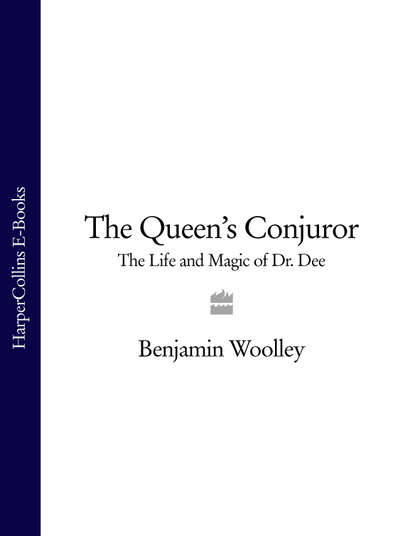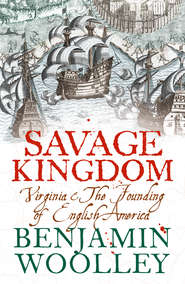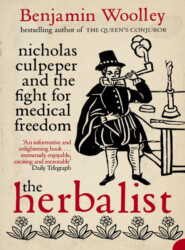По всем вопросам обращайтесь на: info@litportal.ru
(©) 2003-2024.
✖
The Queen’s Conjuror: The Life and Magic of Dr. Dee
Настройки чтения
Размер шрифта
Высота строк
Поля
Dee did not see the Stegonographia as merely a political or diplomatic tool, considering the text to have other, more esoteric uses. Cryptography, particularly of the sort practised by Trithemius, was closely connected to the Cabala and it was conceivable that the same techniques used in the Steganographia could be used to decipher other texts written in forgotten or corrupted languages. One that would arouse particular excitement was called The Book of Soyga, an anonymous tome which Dee came to believe contained an ancient message written in the language originally spoken by Adam – in other words the true, unspoiled word of God. Another was a mysterious volume attributed to Roger Bacon which in coming centuries became notorious among cryptanalysts as the Voynich Manuscript.
(#litres_trial_promo) It has yet to be deciphered. The study of codes, which was also the study of the structure of language, might yield the magic key to decoding such texts and revealing the messages they contained.
Beyond even that, Dee commended the Steganographia to Cecil as an example of the intellectual treasures the Continent held and that England so conspicuously lacked. In his letter, he deplored the lack of an English philosopher able to produce works ‘in the Science De Numeris formalibus, the Science De Ponderibus mysticis, and ye Science De Mensuris diuinis: (by which three, the huge frame of this world is fashioned…)’. His travels, learning and access to rare texts and Europe’s leading thinkers meant that he could be just such a philosopher, opening up the riches of the Renaissance to the English court.
X (#ulink_08819a47-cea1-5e1b-91ac-62645ff22a23)
During his stay in Antwerp, Dee wrote:
‘When infancy and childhood are past, the choice of a future way of life begins to present itself to young men as a problem. Having hesitated for some time at the crossroads of their wavering judgment, they at last come to a decision: Some (who have fallen in love with truth and virtue) will for the rest of their lives devote their entire energy to the pursuit of philosophy, whilst others (ensnared by the enticements of this world or burning with a desire for riches) cannot but devote all their energies to a life of pleasure and profit.’
(#litres_trial_promo)
From this earnest assessment, it is clear in which direction Dee imagined he would go. But when he decided to return to England after his lengthy Continental tour, he was to find the choice not as clear-cut as he had assumed.
He arrived at Greenwich Palace on 14 June 1564, accompanied by the Marchioness of Northampton and a slender volume entitled Monas Hieroglyphica, ‘The Hieroglyphic Monad’. The marchioness had arrived in Antwerp in April, as Dee was preparing to come home. She had breast cancer, and was there hoping to benefit from the more advanced medical knowledge found in the Low Countries. Dee offered to accompany her back to England, and in return she promised to reintroduce him to the court.
The first thing he did was show Elizabeth the Monas. He considered it his most important work to date. He said that he had felt ‘pregnant’ with it for seven years, then written it in a fit of intellectual and mystical rapture in just twelve days.
For a man once arrested for ‘calculing’ and still arousing suspicion because of his interest in the ‘uncanny arts’, the presentation of such a work as the Monas to the Queen was risky. It was filled with magical ideas, deeply influenced by Continental thinking, dangerously preoccupied with what churchmen, both Catholic and Protestant, considered pagan matters, combining numerology, the Cabala, astrology, cosmology and mathematics. This may explain why Dee decided to dedicate it not to Elizabeth, but the newly-crowned Holy Roman Emperor, Maximilian II, nephew of Charles V of Spain. As Dee had discovered during a stay the previous year at the Emperor’s court in Bratislava, Maximilian was both broad-minded and interested in the sorts of ideas the Monas explored. Dee had no guarantee that Elizabeth would show such an attitude.
His decision to present the work to her could be seen as a sort of test, a way of seeing whether his homeland was ready for the philosopher skilled in the science ‘De Ponderibus mysticis’ that he had told Cecil England lacked and which he had now become.
Elizabeth’s response was encouraging. Intrigued, if baffled, by the Monas, she promised to become Dee’s ‘scholar’ if he disclosed ‘unto her the secrets of that book’.
(#litres_trial_promo) The two of them sat together ‘perusing’ the mysterious work; queen and subject, pupil and master, magician and apprentice. She became, he later proclaimed, a ‘sacred witness’ of its secrets.
(#litres_trial_promo)
The title refers to a symbol or hieroglyph. The same symbol appeared on the title page on the Propaedeumata. Like the Propaedeumata, Monas comprises a series of theorems. But there the similarities between the two works end. Where the Propaedeumata is about observation and experimentation, the Monas rather arises from pure thought and mystical intuition.
A clue to its meaning is contained in a question posed in Dee’s dedication to Maximilian:
Is it not rare, I ask, that the common astronomical symbols of the planets, instead of being dead, dumb, or, up to the present hour at least, quasi-barbaric signs, should have become characters imbued with immortal life and should now be able to express their especial meanings most eloquently in any tongue and to any nation?
(#litres_trial_promo)
It was ‘as if in an age long past they had been the same, or as if our forefathers had wished that in the future they would be such’.
In other words, Dee thought that the ‘astronomical’ symbols were relics of a lost universal language that transcended national and, by implication, religious barriers. The aim of the Monas was to test this hypothesis by looking for suggestive structures within the symbols themselves. What Dee claimed to have discovered, the ‘very rarest thing of all’, was that all the symbols could be combined into one, a variant on the sign for Mercury. This symbol formed the central motif of the Monas, exemplifying the unity of the universe.
Despite – or perhaps because of – the book’s inherent dangers, Elizabeth seemed drawn to the Monas. She even suggested she might act upon its findings.
(#litres_trial_promo) In the dedication, Dee wrote that if Maxmilian ‘will look at [the book] with attention, still greater mysteries will present themselves such as we have described in our cosmopolitical theories’.
(#litres_trial_promo) Presumably the same applied to Elizabeth.
Unfortunately, the nature of these ‘cosmopolitical theories’ remains obscure, as the work in which Dee apparently expounded them is lost. Dee later used the term ‘cosmopolitical’ in the sense of cosmopolitan, referring to a more global perspective on political affairs. In one book he described himself as a ‘Cosmopolites’, a ‘Citizen and Member of the whole and only one Mystical City Universal’.
(#litres_trial_promo) Perhaps these theories in some way related to his ideas on imperialism, a vision of world government run according to universal Christian principles.
Whether or not these were the ‘cosmopolitical’ concerns that Dee discussed with Elizabeth, she was beguiled by them, and ‘in most heroical and princely wise did comfort me and encourage me in my studies’.
He needed all the comfort and encouragement he could get, as the book received a less welcome reception in other quarters. ‘University Graduates of high degree’, Dee later wrote, ‘dispraised it, because they understood it not’.
(#litres_trial_promo) He does not say why, but its unorthodox treatment of what were essentially foreign philosophical and mathematical ideas was a likely reason.
Dee’s relationship with English academia had been deteriorating since he left Trinity College in 1548. The first sign of trouble had come in 1554, when he turned down a post to teach the ‘Mathematical Sciences’ at Oxford. The Monas marked a decisive split. In his preface to the English edition of Euclid’s Elements he pointedly identified the book’s readership as ‘unlatined people, and not University scholars’. He increasingly saw the latter as provincial, dogmatic and mathematically illiterate.
This antagonism may have preserved his intellectual freedom, but it came at a high price. An independent mind needs independent means, but, thanks to his father’s catastrophic fall from grace during Mary’s reign, that luxury was denied him. Without the support of an academic stipend, he had to look elsewhere to make a living.
There was only one alternative: the court, which was filled with the very people he had so roundly condemned for becoming ‘ensnared by the enticements of this world or burning with a desire for riches’.
In his poem ‘The Lie’, Sir Walter Raleigh described the court as a place that ‘glows and shines like rotting wood’. Its theatricals were spectacular, often entertaining, but always deadly serious. The stakes were very high: wealth, status, power, or poverty, oblivion and annihilation. In the Presence Chamber of the Queen’s palaces, where the courtiers gathered each day to catch Elizabeth’s attention and, hopefully, her favours, the selective pressures were intense and remorseless. It was survival of the quickest, smartest, prettiest and wittiest.
Everything revolved around Elizabeth. For courtiers such as the poet Sir John Davies, she was literally at the centre of the universe, and they railed against the newfangled Copernicanism espoused by Dee, for fear it might knock her and their whole world off balance. In a poem inspired by the sight of the Queen dancing, Davies wrote:
Only the earth doth stand for ever still,
Her rocks remove not nor her mountains meet;
(Although some wits enricht with learning’s skill
Say heav’n stands firm and that the earth doth fleet
And swiftly turneth under their feet):
Yet, though the earth is ever steadfast seen,
On her broad breast hath dancing ever been.
(#litres_trial_promo)
Those who fell out of Elizabeth’s orbit found themselves banished into utter darkness, without money, influence or prospects. Following some unrecorded slight or insult, the poet and diplomat Sir Edward Dyer, Dee’s pupil and close, if sometimes troublesome friend, was excluded for years, and driven to the edge of destitution. He eventually won his way back to favour by staging a spectacular pageant featuring himself dressed as a minstrel, singing to the Queen from the branches of an oak tree of his ‘tragical complaint’.
(#litres_trial_promo) Elizabeth was charmed, and patted a place for him by her side.
Dee believed he also had a special place next to Elizabeth. He was one of very few commoners to be honoured with personal visits. Twice, they coincided with Dee’s personal tragedies. The first time she arrived, with the entire Privy Council in attendance, was just four hours after the death of his second wife. On the second occasion, Dee had just buried his beloved mother. On both occasions, Elizabeth refused his befuddled entreaties to come into his house, and offered consolation. Both times Dee anxiously struggled to overcome the awkwardness of the situation by trying to entertain her as she waited outside. During the first visit, he brought out the magical mirror Sir William Pickering had given him, which ‘to her Majestie’s great contentment and delight’ he demonstrated to her.
(#litres_trial_promo)
He was frequently summoned to court to talk to her about various matters, some of which were quite intimate, such as the prospects for her proposed marriage to the Duke of Anjou. He had become, one commentator noticed, ‘hyr philosopher’.
(#litres_trial_promo)
He reciprocated such attentions with strong devotion – something she engendered in many of her courtiers, who often translated their dependence upon her into expressions of rapturous love. He devised a special symbol, a capital letter ‘E’ topped with a crown, which he used to refer to her in his diaries. Minutely noting every favour she granted, he refused to blame her for the many denied.
In January, 1568, he gave copies of a new edition of Propaedeumata to William Cecil and the Earl of Pembroke to present to her. Three days later Dee heard back from Pembroke of her ‘gracious accepting and well liking of the said book’.







